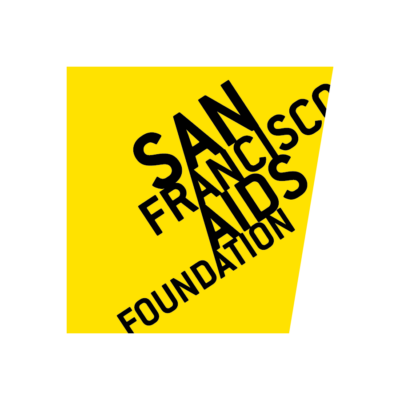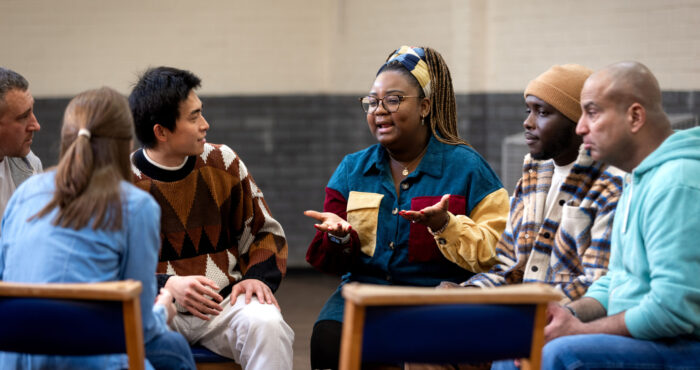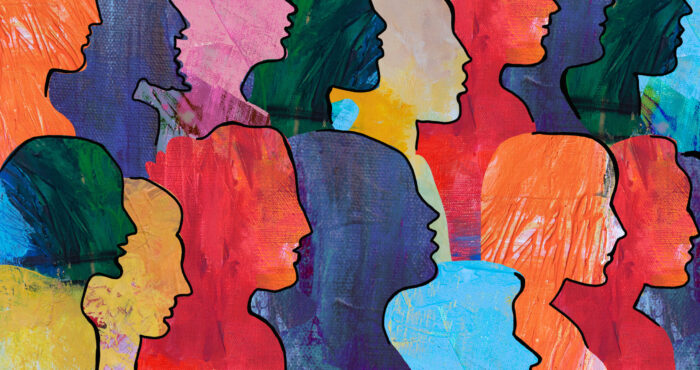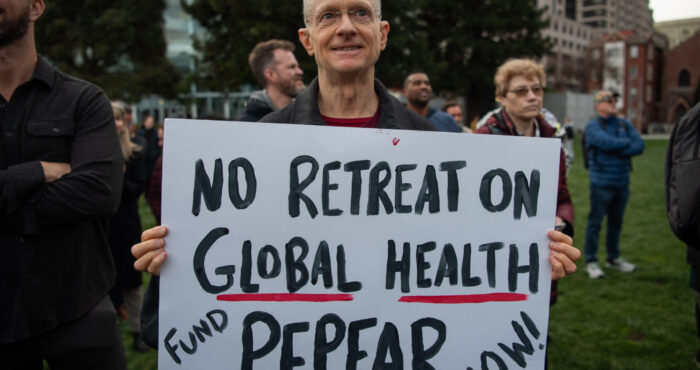“Celebrating the fact that we’re still alive”
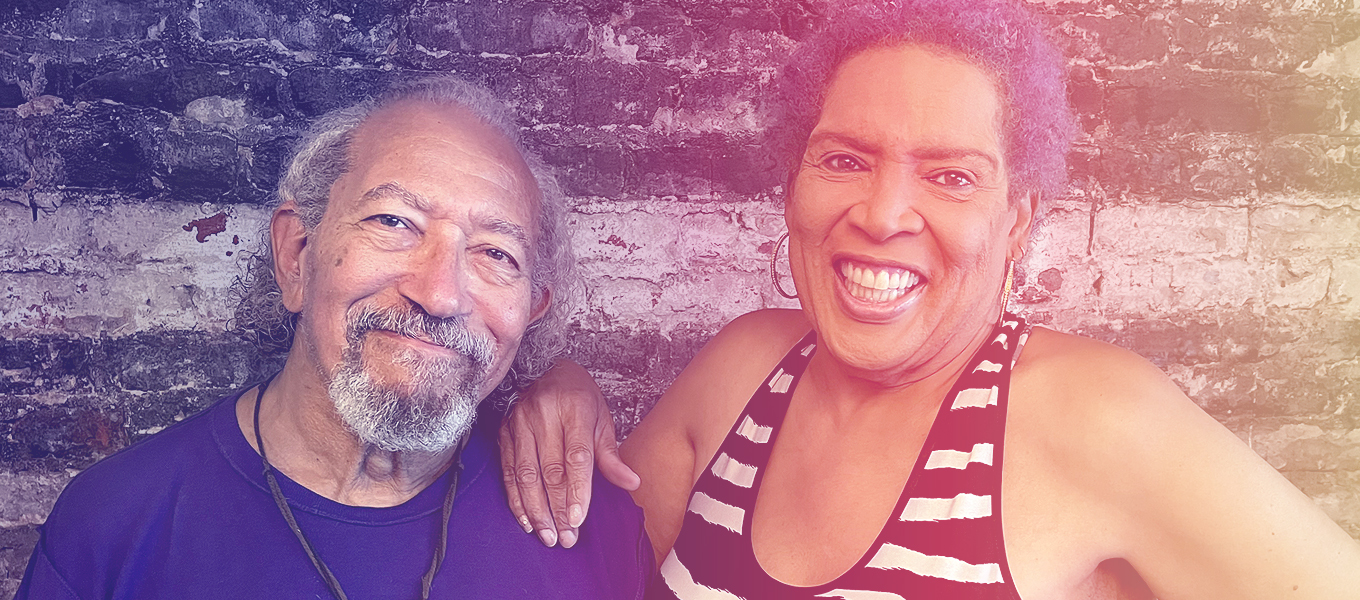
In honor of HIV and Aging Awareness Day, we’re sharing the incredible stories of three long-term survivors–all over age 70–who have each lived with HIV for more than 30 years. Having weathered the worst years of the AIDS epidemic, and experienced loss on nearly unimaginable levels, these survivors are doing more than surviving these days. They’re thriving, and celebrating every new day with purpose and passion.
“I’m just thankful that I’ve survived.”
Veronika Fimbres didn’t expect to live past age 21. She describes her life as “a struggle,” due in part to her identity as a Black transgender woman, her experiences in a string of abusive relationships, her past struggles with substance use, and an early HIV diagnosis in 1987. But now, at age 70, Fimbres says she appreciates each new day and all the ways she has overcome her circumstances to build a fulfilling and happy life for herself.
“I’m in a good place right now. And I’m thankful for being able to have a positive impact on people around me,” said Fimbres, who is the manager of clinical assistants and volunteers at San Francisco AIDS Foundation.
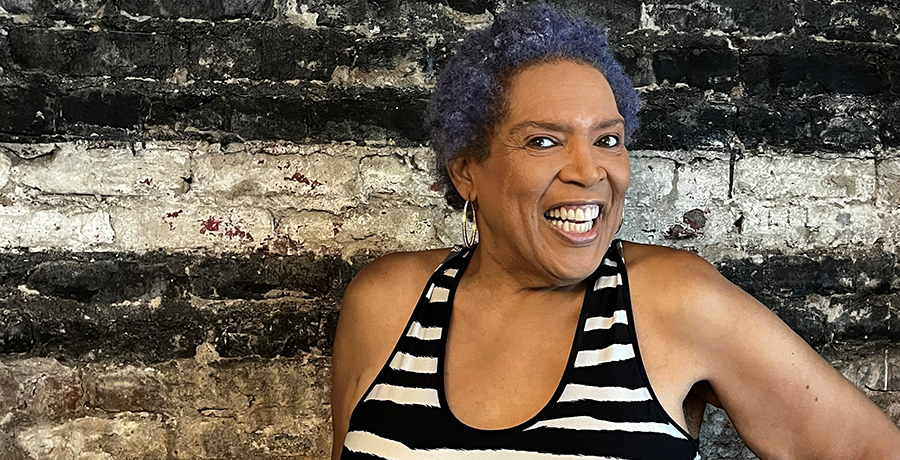
Fimbres has lived her life as an activist since she was 11 years old–that being the year she joined the NAACP.
“I remember joining after seeing the way Black people were being treated in Birmingham Alabama [during the Birmingham riot]. People were being beaten up, spit on, and harassed–all for the color of their skin.”
It wasn’t the first time Fimbres realized she would be treated differently because of her identity. When she was seven, she remembers being called the N-word by an older woman when she was playing with a white friend.
“I didn’t understand what the woman was saying. My friend was like, ‘We should go.’ And I said, ‘Why?’ He had to explain that the woman was talking about me. I remember telling my mother when I got home, and she was just devastated for me. But that’s when she first explained that someone could hate you because of the color of your skin.”
Fimbres grew up to be part of activist communities–protesting against the war, marching in the Detroit riots, and joining up with ACT-UP New York during the AIDS crisis. During the early years of the AIDS crisis, Fimbres worked at the VA Hospital in New York with AIDS patients. She vividly remembers the horrific stigma that people with AIDS faced, even in medical settings.
“One of my patients needed a chest X-ray. Because he had AIDS, one of the hospital staff wore a hazmat suit around him. They treated him so poorly, he was just in tears. Another patient had friends in his room every day–they were carrying on and laughing and partying. The doctor just kept telling him, ‘If you don’t tell these people you have AIDS, I’m going to.’ Eventually the doctor did tell his friends, and the friends stopped coming to visit.”
Fimbres received her own HIV diagnosis in 1987. She was so sick, she was told to make arrangements and that she would likely die soon. They sent her home from the hospital in an ambulance, and told her to make arrangements for death. But she didn’t die after being told she would, something that would happen repeatedly to Fimbres throughout the 1990s. She would continue to beat the odds.
Tragically, in 1992, Fimbres lost both her youngest brother and her fiance to AIDS. It was a devastating time for Fimbres. That same year, Fimbres decided to stop her drug use (she had started using earlier in life after being introduced to cocaine by a former employer).
In 1996, she was ready to make a fresh start in life. With $100 in her pocket, she left her family’s home in Indiana for a new life in San Francisco. One of her first stops was at San Francisco AIDS Foundation, which helped her find a temporary place to stay when she first arrived.
Since relocating to San Francisco, Fimbres has lived her life proudly and exuberantly as a transgender woman–bringing warmth and energy to every professional opportunity that she’s strived for.
She served as the Commissioner of the VA for 14 years–becoming the first publicly transgender officer in the history of the City and County of San Francisco. She was appointed by Mayor Willie Brown to the Ryan White Care Council, and helped to secure funding to educate San Francisco practitioners on best practices for working with trans communities. She also had a hand in changing the categorization of trans people on epidemiology reports–creating new categories for trans women instead of lumping them in with men. She also spent 40 years working as a hospice nurse, and has found her way back to San Francisco AIDS Foundation recently as a member of our Black Health team.
For more than 35 years, Fimbres has lived with HIV, never forgetting the early days when HIV “was a literal death sentence.”
“I’ve been fortunate to be undetectable for many years. So I’m just thankful that I’ve survived. Because so many people didn’t.”
“That’s when I started to think, ‘Maybe I won’t die from this.’”
Carlos Ferreira, 73, was diagnosed in the early days of the epidemic–38 years ago, in 1985.
“That was the year they came out with the first test,” he said. “At that time, you kept it a secret. You dare not tell anybody.”
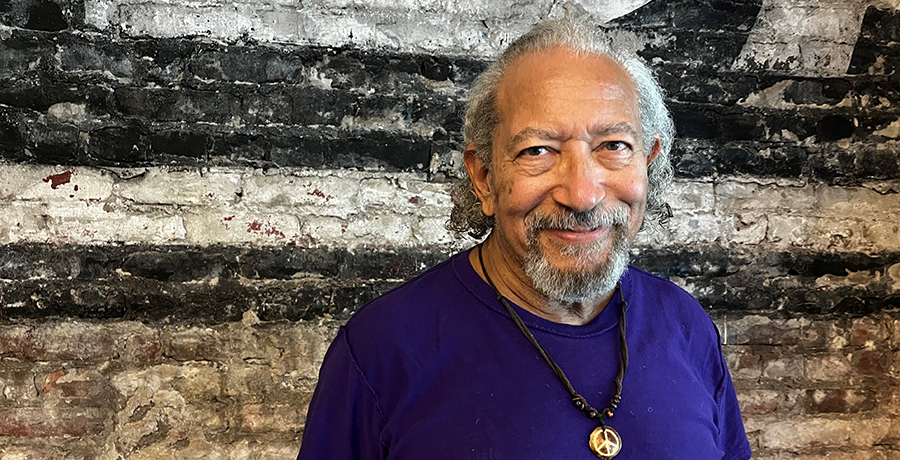
Ferreira remembers receiving his test results in the room of a school, from a volunteer. They told him he had only a 30% chance of living three years.
“I remember thinking, ‘Well, 30% is better than 1%.’ And wondering how I might increase my odds of living.”
Ferreira remembers attending meetings, doing whatever he could to learn more about treatments and holistic medicine, but that, “there was nothing. We were on our own.”
Two years later, he met a man, Steve, who had already lost a previous partner to AIDS.
“I thought, ‘well, at least he’ll be able to take care of me as I’m dying,’” said Ferreira. “But then after about a year or two, I realized that my T-cells were pretty stable. They weren’t declining. And that’s when I started to think that maybe I wouldn’t die from this.”
That was in the late 1980s, and into the early 1990s. Ferreira never needed to take some of the horrific early HIV treatments–eventually, he would be classified a “long-term non-progressor,” in other words, a person whose own immune system is able to prevent immune system decline from HIV. Ferreira enjoyed life, realizing that his illness wasn’t progressing. He moved to the Bay Area from LA in 1992, and joined a community of runners. He remembers “just not thinking” much about HIV and AIDS then.
“I sort of ran away from it,” he said. “I never went to friends’ funerals. I didn’t go to visit people in the hospital. I didn’t go to memorials. I just didn’t want to acknowledge it. It terrified me.”
When he turned 55, he remembers his doctor saying that the CDC now recommended that all people living with HIV start on antiretrovirals.
“I immediately thought, ‘But if it ain’t broke, don’t fix it!’ But I thought about it for a few months, and eventually decided that maybe I would give it a shot. So I started treatment, and I’ve been undetectable for quite a long time now.”
Years later, Ferreira was invited to join a writing group to share experiences around HIV and AIDS. The experience was difficult, but cathartic for Ferreira, as he confronted the difficult feelings he’d had since his diagnosis.
“It brought me back to realize the magnitude of everything I have experienced. Writing about survivorship, and how we survived the epidemic. I know a lot of people still have a lot of trauma around it. But I”m trying to take a different tact. I want to celebrate our resilience.”
“We’re still here. We are not gone yet.”
Hulda Brown, 79, is a long-time San Francisco resident, originally from Chicago. In her 40s when she contracted HIV, she’s been living with HIV for 32 years–since 1991.
She remembers that it took two weeks to receive her test result, and that it was delivered over the phone. Her first experience with HIV treatment was a grueling regimen of 28 pills, taken three times per day.
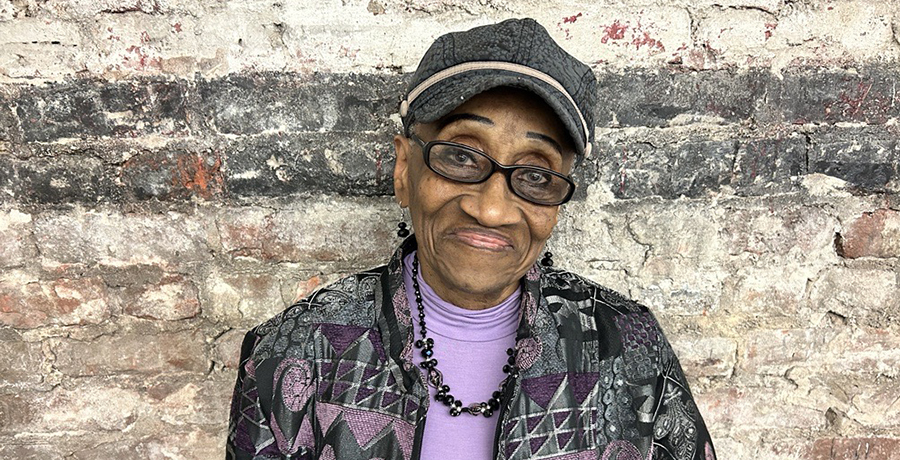
Brown said it’s been difficult navigating HIV services and support designed for gay men over the years.
“HIV was a death sentence in 1991,” said Brown. “I was an extremely introverted person, so I didn’t always know what questions to ask or what to ask for. I remember sitting in groups and getting services with lots of gay men–at that time, all of the information we were getting was geared toward white gay men. And here I am, a straight Black woman.”
Brown found a community she could relate to with WORLD–Women Organized to Respond to Life-Threatening Diseases–at the time located in San Francisco, and now based in Oakland. She said that although she found community with other women living with HIV, “the stigma was still there.”
“We still had the stigma hanging over the top of us,” she said. “Even dealing with doctors and their treatment of us, we would still feel it. Some people just didn’t want to have any contact with us. People assume that you must have done something wrong in order to become positive.”
To fight back against stigma, Brown said she likes to remind people that the first word in HIV is “human.”
“This is a human condition,” she said. “Anyone can get HIV. From babies on up. At the end of the day, we’re all human.”
Now, Brown is not afraid to speak openly about HIV and her experience.
“This used to be something we were supposed to hide under a basket. I never expected that I would ever be able to speak about my status. But going to support groups over the years, I realized that what you say affects others. And you never know what might have an impact. Someone might need the information you have. So you have to reach out.”
Brown said she realizes people living with HIV who are in their 70s and 80s are paving the way for others who will grow older with HIV.
“We all thought we would die young, but here we are. We may move a bit slower, but we can still do many of the same things we used to do. We’re still here. We are not gone yet.”
My Fabulous Disease: Book Reading & Discussion
Join us for a special community event in commemoration of HIV & Aging Awareness Day! We’re hosting GLAAD Award-winning author Mark S. King and special guests for readings and discussion of Mark’s new book of essay as a 40-year HIV survivor.
Saturday, September 16, 6:30 pm
Strut, 470 Castro St., San Francisco






